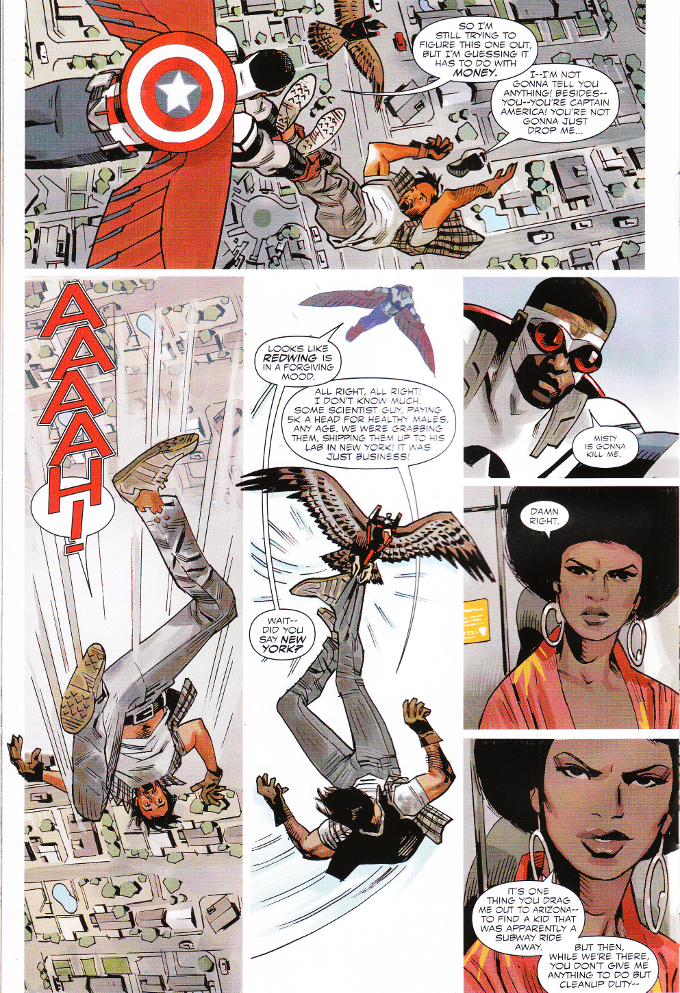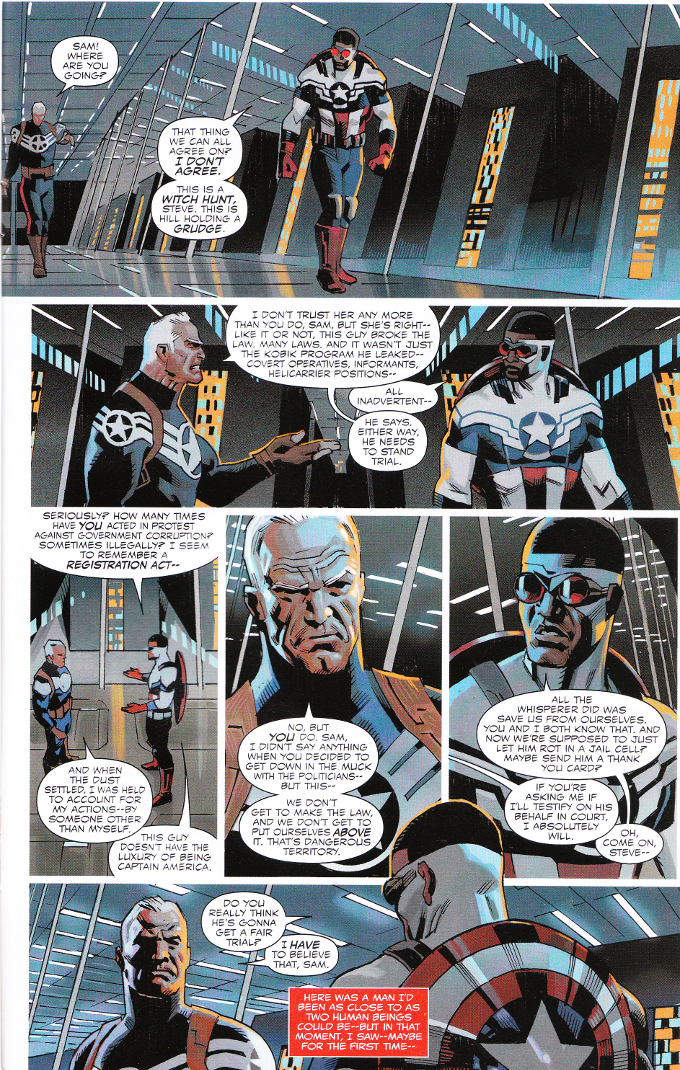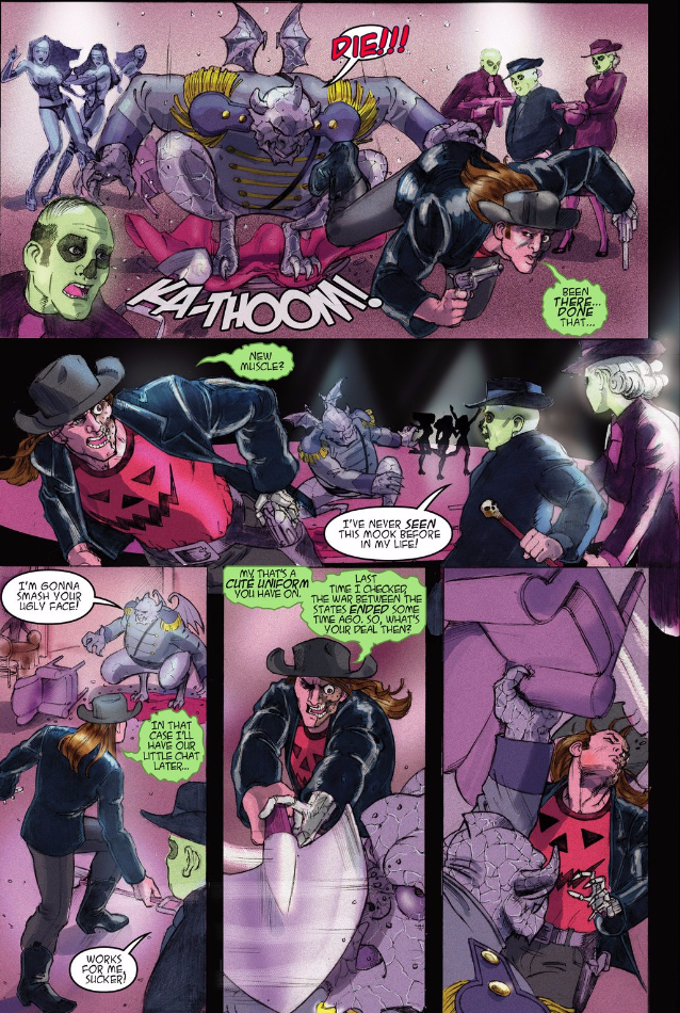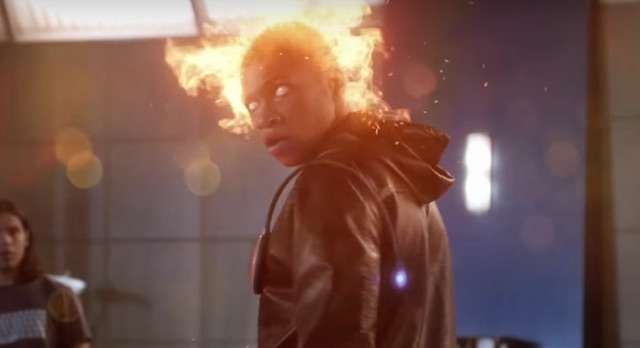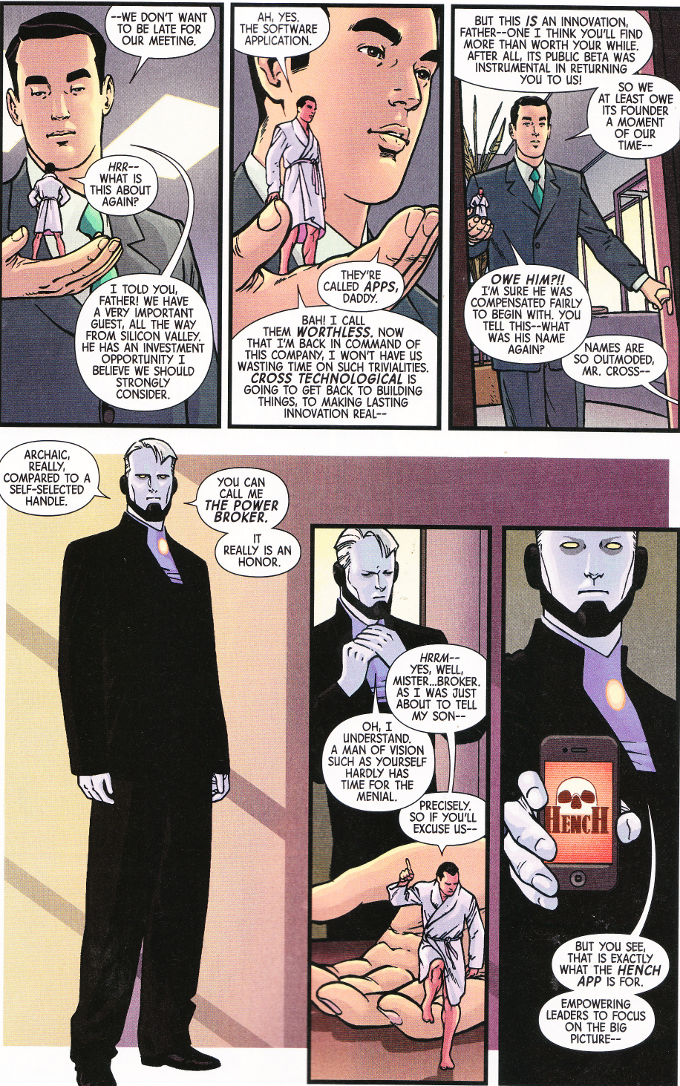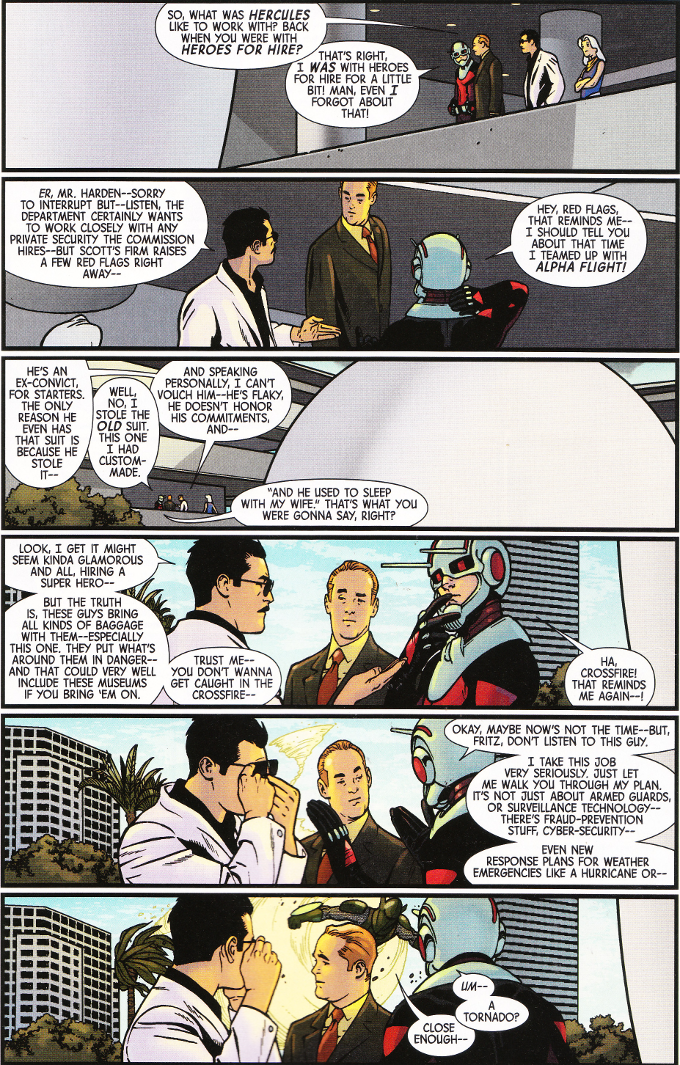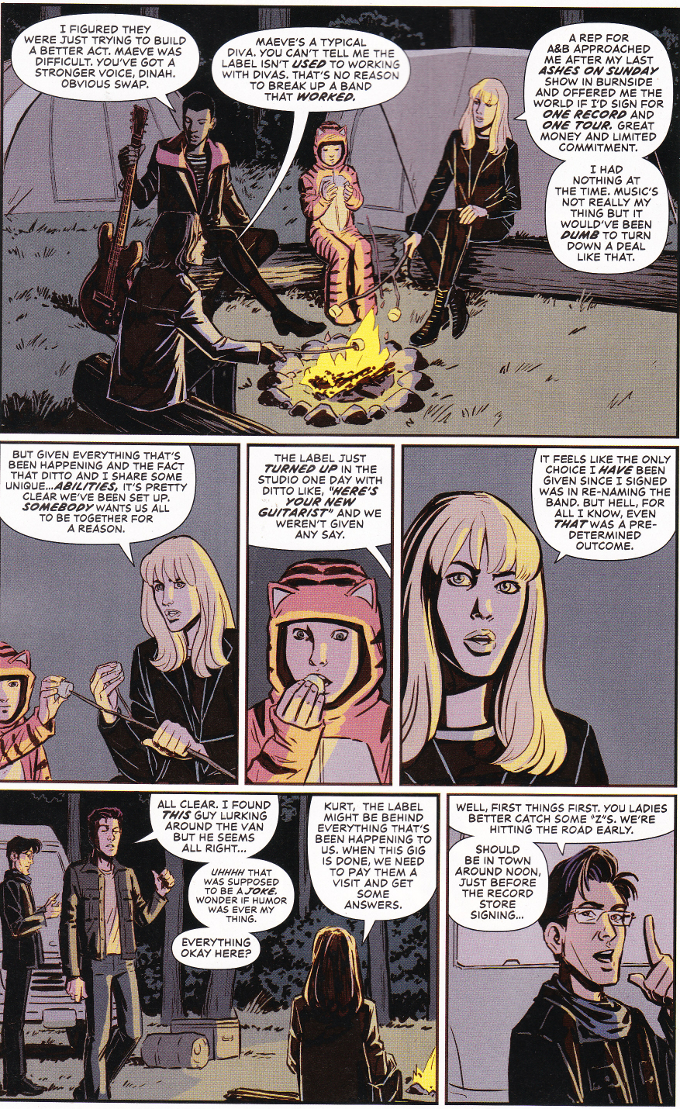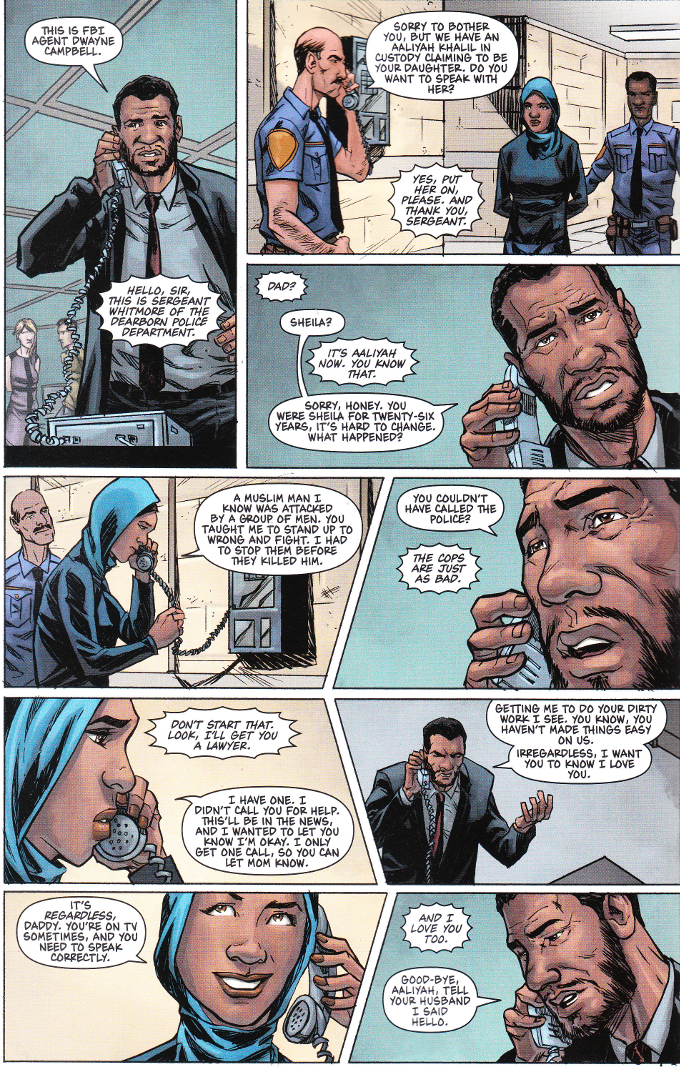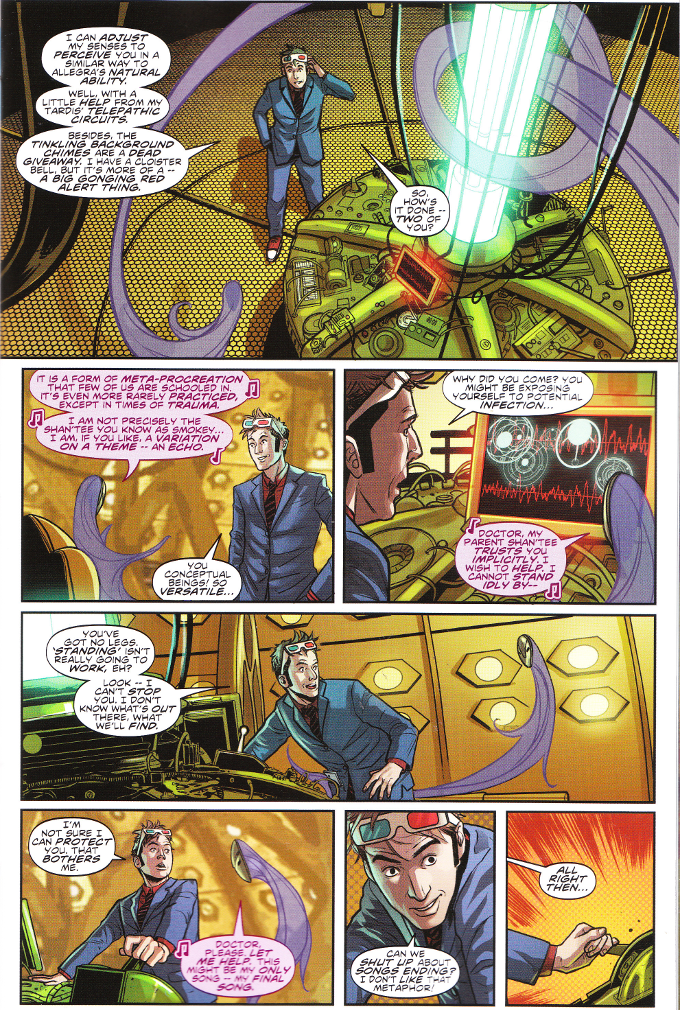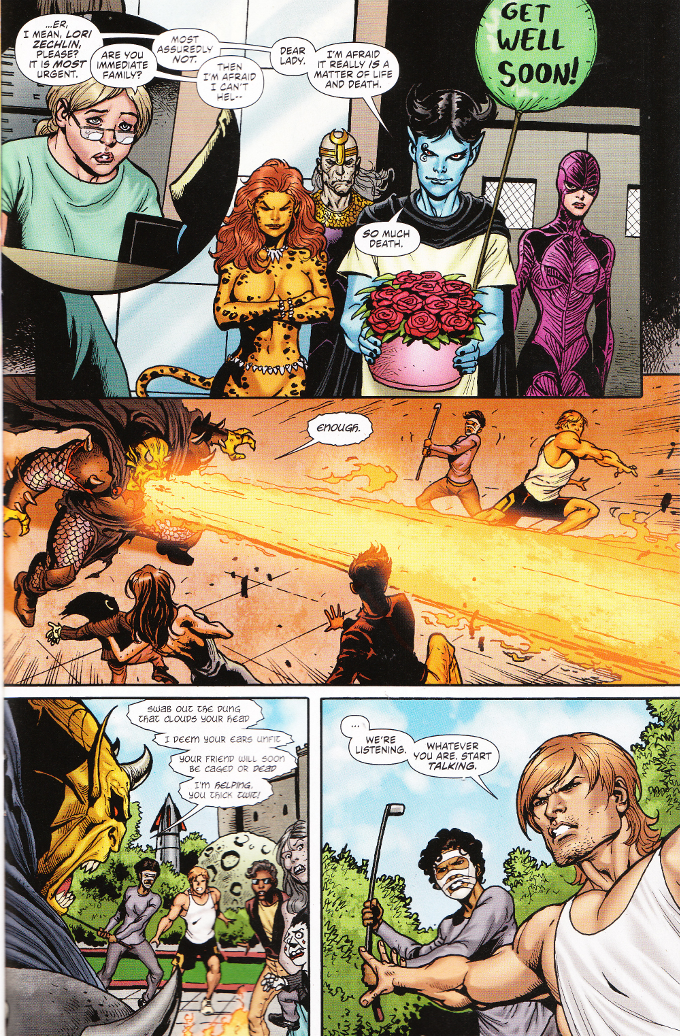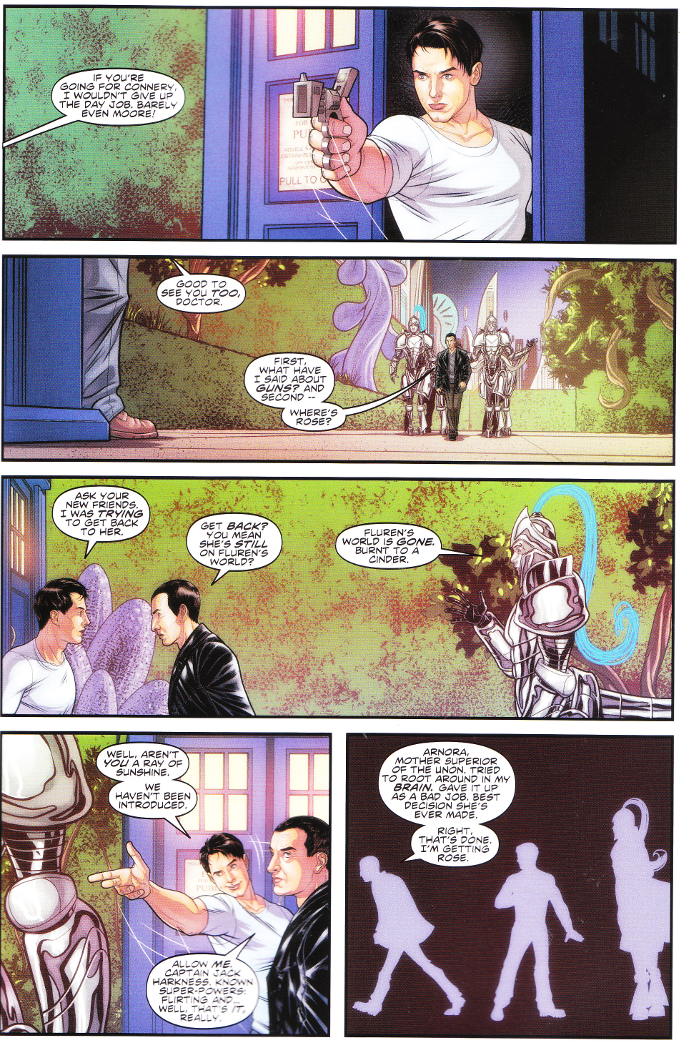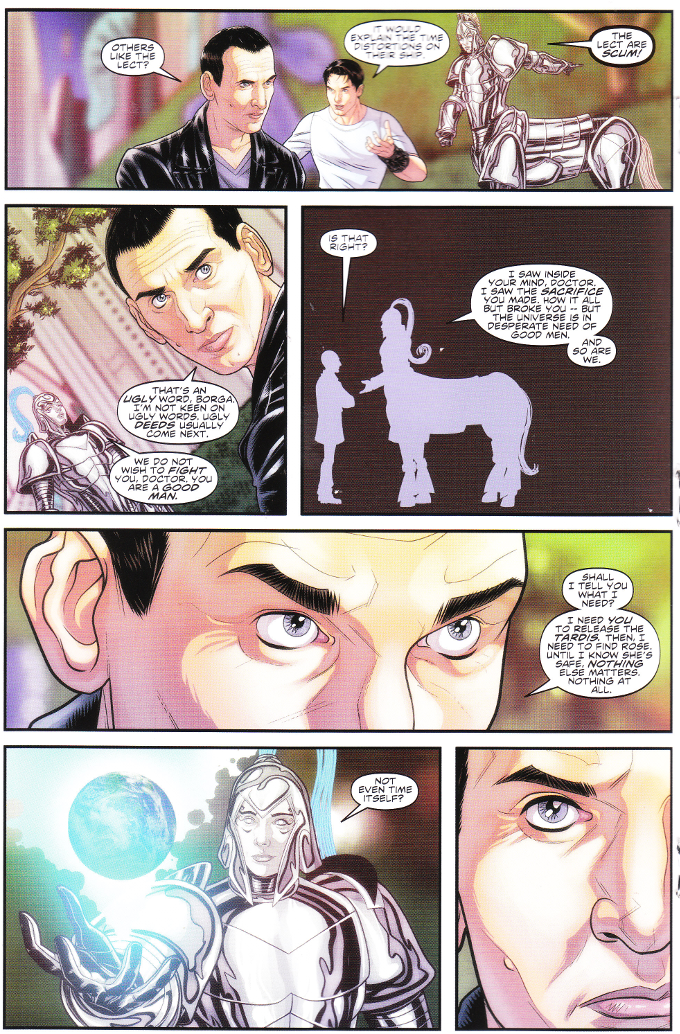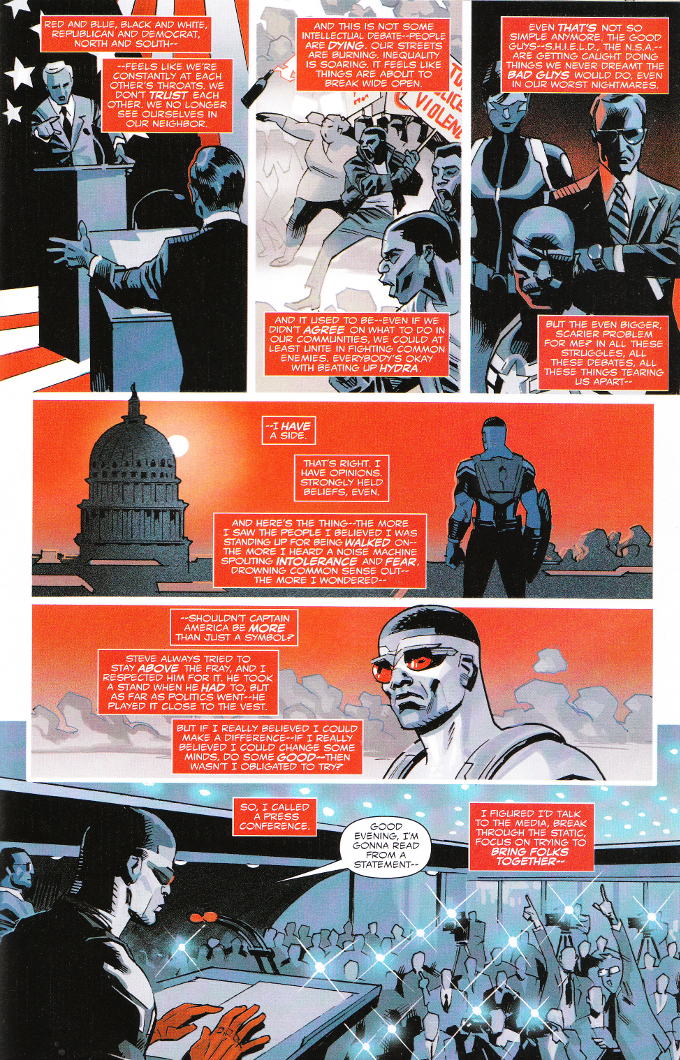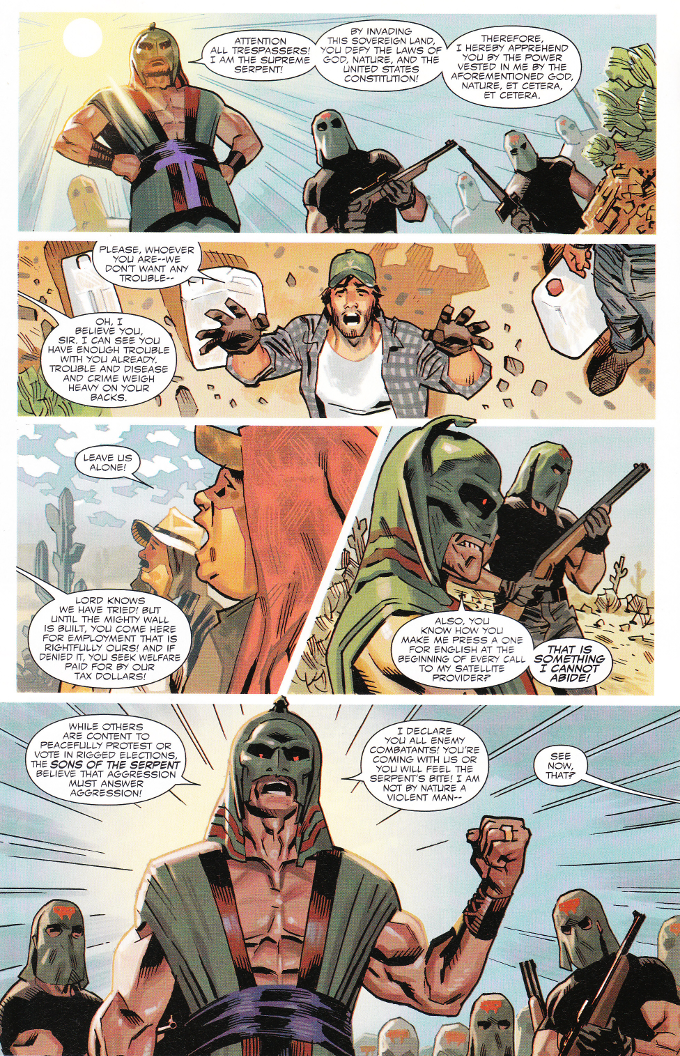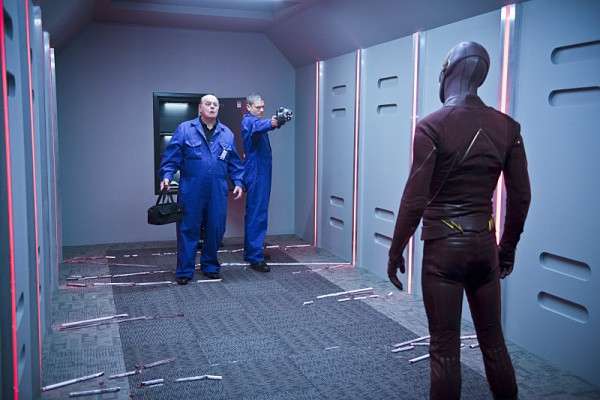For a summary of the episode guide layout & categories, click here.

Plot
24 years ago, Kara Zor-El was sent to Earth from the planet Krypton to look after her baby cousin, Kal-El, in the wake of their planet's destruction. But something went wrong and Kara's rocket became trapped in The Phantom Zone. It eventually escaped, but also opened the way for Fort Rozz - a Kryptonian prison containing the worst criminals in the universe - to follow her to Earth. She was found by Kal-El - known to the world as Superman - and entrusted to the care of The Danvers Family.
Now, 12 years later, Kara lives in National City, employed as a personal assistant to media mogul Cat Grant. It isn't a bad life but Kara feels like she should be using her powers to follow Superman's example rather than staying hidden, as her adoptive sister Alex suggests. But when Alex's plane is wrecked by a bomb, Kara throws herself into action and assumes her heroic destiny.
Influences
Action Comics #252 (first appearance of Kara Zor-El),
Action Comics #279 (First appearance of The Danvers family),
Superman/Batman: Supergirl (first revised origin of Supergirl), the DC Comics series
Chase (development of the DEO as a group),
Superman: The Movie (Kara's saving a plane and Vartox's method of getting her attention) and
The Devil Wears Prada (basic set-up of Kara's job, and the boss character provides the personality for the DCTVU version of Cat Grant).
Goofs
In the opening narration, Kara says that Krypton was destroyed 24 years ago. She then spent 24 years in The Phantom Zone before being found by Kal-El. Shouldn't she have said Krypton was destroyed 35 years ago, since she's been on Earth for 12 years at this point?
So Superman has never checked up on Kara in person in the last decade? She asks Jimmy what he is like... so logically she must not have seen him at all since she was 13? What a dick!
Granting that the DEO have never been a bastion of competence in the comics, the version we see here seem to be even worse. They've apparently known about Kara and her powers for years and done nothing about her for good or ill. Given Henshaw's obvious fear of aliens of any kind, it seems shocking that he wouldn't have brought Kara in for experimentation and he clearly doesn't trust Alex enough to leave her sister alone out of respect. Yet once they are given a superhuman who is willing to work with them who would be capable - with guidance and knowledge - of being able to deal with nearly any of the threats they are afraid of, Henshaw dismisses her and tells her to stick to fetching coffee! What an idiot!
On that note, Henshaw says the DEO's job is to cover up the existence of aliens on Earth. What's the point in doing that if Superman is operating publicly and everyone knows he's from another planet?
For that matter, the DEO sucks as a covert organization. Henshaw mocks the subtly of a flying woman in a bright red skirt yet the DEO has helicopters launching explosive missiles next to a power plant in the middle of the day as part of their efforts to stop Vartox!
If being called Supergirl in the press really bothers Kara that much, why doesn't she go to another media outlet, give them an exclusive and say that she's Superwoman?
Performances
Melissa Benoist is perfectly cast as Kara, playing her perfectly as a geeky but well-meaning heroine who shows her steel when push comes to shove.
Mehcad Brooks is a perfect Jimmy - er -
James Olsen, projecting the character's optimism with every smile and affirming statement.
Artistry
The special effects are on-par with what we see on
The Flash and quite impressive for a television series budget. The sequence in which Supergirl saves the plane is particularly noteworthy.
Super Trivia
Kara's background on the show most closely emulates her origin in the most recent retellings of Supergirl's origins from the comics
In
Action Comics #252, it was revealed that the Kryptonian city of Argo City was able to survive the destruction of the planet, encased within a force-field which clung to a meteor that was formed by the planet's explosion. Eventually, the lead shielding protecting the city failed and Argo City's chief scientist, Zor-El, sent his daughter to Earth in a rocket, having somehow learned of the Kryptonian hero Superman.
In
Superman/Batman: Supergirl, things were modified so that Kara escaped Krypton at the same time as Kal-El, but her ship became encased in a Kryptonite meteor that eventually reached Earth over a decade after Clark had established himself as Superman. This time Clark entrusted Kara to Ma and Pa Kent, who were still alive in this reality.
In the current
Supergirl series, Kara Zor-El was once again sent to Earth to look after her baby cousin. This time, however, she was clearly an older teen - perhaps 18 - when she arrived and she set about looking after herself and establishing her own life on Earth, independent of her cousin.
Kara describes The Phantom Zone as a region in space where time doesn't pass. In the comics, The Phantom Zone is typically portrayed as another dimension outside the usual boundaries of Space and Time. However, Krypton in the comics - much like Krypton in the show - made use of The Phantom Zone as a prison. Those who are trapped in The Phantom Zone are able to perceive the physical world but are unable to interact with it.
In
Action Comics #252, Superman quickly realized that Kara was his first cousin but - being unable to care for her himself without attracting suspicion (in that day and age, a bachelor like Clark Kent couldn't be expected to take care of a teenage girl!) - he dropped her off at an orphanage, where she was eventually adopted by The Danvers in
Action Comics #279.
In the comics, The Danvers were named Fred and Edna. Fred was a cop and Edna a homemaker.
In the DCTVU, The Danvers are named Jeremiah and Eliza. They are both scientists and they reportedly helped Superman to gain control of his powers in the DCTVU.
Jeremiah Danvers is played by actor Dean Cain, who played Superman in the TV series
Lois and Clark.
Eliza Danvers is played by actor Helen Slater, who played Supergirl in the 1984
Supergirl movie.
The Danvers' daughter's name is Alex. Or "A Lex" as in Lex Luthor - the traditional enemy of Superman and all Kryptonian heroes. Alex's relationship with Kara starting out is rather adversarial, discouraging her from heroism out of fear that the existence of a Supergirl somehow diminishes her accomplishments... much as Lex Luthor is jealous of Superman.
In the comics, Catherine "Cat" Grant was originally a gossip columnist for The Daily Planet. She briefly dated Clark Kent and had a reputation for being flirtatious and provocative, causing nearly as many scandals as she reported.
Before the New 52 reboot, Cat Grant developed an adversarial relationship with Supergirl, due to a perceived lack of respect and her accidental injury during a metahuman fight Supergirl had trouble containing. Cat started a slander campaign and turned many people in Metropolis against the Girl of Steel.
Winslow "Winn" Schott shares a name with the DC Comics villain Toyman. In the comics, Schott is a sociopath and technological genius who developed a number of lethal weapons disguised as ordinary toys, which he used in committing his crimes. Among these crimes were the murder of Cat Grant's young son. Here, he's an IT guy at CatCo.
In a nod to his comic book counterpart, Winn's desk at CatCo is covered with toys and action figures.
James "Jimmy" Olsen is famous even to non-comics readers as Superman's Pal. He says he prefers to be addressed as James, allowing only his mother and Superman to call him Jimmy. Here, he is a Pulitzer-Prize winning photographer and the new art director for CatCo, having just left his job with The Daily Planet.
In the comics, James Olsen won The Pulitzer for his work during the
Infinite Crisis story line. In the DCTVU, he won it for taking the first picture of Superman.
Apparently Superman has taken an more hands-off approach to his cousin than he did even in The Silver Age, with Kara asking Jimmy Olsen what he is like. In The Silver Age comics, Superman left Kara in an orphanage but he checked in on her regularly and trained her to use her powers personally, only revealing her to the world once she was ready and had a stable home.
As in the comics, Kara uses glasses and a mousy personality as a disguise in her secret identity. Jimmy comments that she looks a little like Superman right around the eyes.
There is no indication that Kara knows that Clark Kent is Superman. Indeed, the name Clark Kent is not mentioned anywhere in this episode.
Saving a flying vehicle from crashing in your first public appearance is something of a Super-family tradition. Superman did it twice in his first night on the job in S
uperman: The Movie, saving Lois Lane's helicopter and Air Force One in two separate incidents. He saved an experimental space plane in the 1987 comic series
Man of Steel and saved a passenger jet in
Superman: The Animated Series. He also saved an airplane in his first public appearance upon his return to Earth in
Superman Returns.
One of the news reporters covering the plane rescue describes Kara as " a guardian angel". In the 1990s, Supergirl was given a new origin where she was a literal guardian angel.
The Otto Binder Bridge - which Kara damages while trying to save the airplane - is named in honor of Otto Binder - the writer who created Supergirl.
Supergirl is described as being 5'9". This is taller than her height in the pre-Crisis comics (5'7") and post-Crisis comics (5'5")
The reptilian criminal Vartox is quite different from his comic book counterpart. Here, Vartox is a murderous thug, who appears to be Kara's superior in terms of strength and durability.
In the comics, Vartox was a hero and an ally of Superman. Another lone survivor of an alien species who gained fantastic powers on his adopted home world, Vartox was described by Superman as a much more experienced hero, who had been saving the universe since he was a super-tot. Vartox was on par with Superman in terms of strength and durability, but possessed many powers Superman did not, such as telekinesis and the ability to temporarily transfer his powers to other people.
Kara's mother, Alura Zor-El, is usually referred to in the comics by her maiden name, Alura In-Ze. In the reality of the DCTVU, Alura was somehow responsible for the imprisonment of the criminals incarcerated in Fort Rozz in The Phantom Zone, being described by Vartox as "judge and jailer".
Alura was a much more sinister figure in the comics. Like Kara, she survived Krypton's destruction, eventually being found by the malevolent computer Brainiac and trapped in Kandor - a Kryptonian city Brainiac had stolen and shrunk. Superman eventually rescued the city and found a way to restore it. Alura became the leader of a faction of Kryptonians who wished to build a new Krypton rather than adapt to life on Earth. This would eventually lead to a war between New Krypton and Earth, with Superman stuck in the middle.
The costumes that Kara tries before deciding on her final costume are based on
various designs Supergirl wore at various points in the comics, with her skirt-length varying over the years. The hot-pants and belly-shirt combo she starts out in combines two impractical pieces - the hot-pants bottom of her costume in the '70s and the belly-bearing tops of the '90s and '00s.
The bank robbery Kara stops is at the corner of 6th and Sprang. This is a reference to comics artist Dick Sprang, who is probably most famous for his work on
Batman in the 1950s. Sprang was also the artist who designed the costume of the first Supergirl back in
Superman #123, though that Supergirl was an imaginary being wished into existence by Jimmy Olsen. Still, that story proved popular enough to fuel demand for a reoccurring Supergirl character
and Sprang's design provided a template for Action Comics artist Al Plastino in creating Kara Zor-El.
As in the comics, the symbol on Supergirl's chest is not a stylized 'S' but the coat of arms of the House of El.
The fire Kara is en route to when she is captured by the DEO is located on the corner of Gates and Igle. This is a reference to writer Sterling Gates and artist Jamal Igle, who created what are probably the most beloved
Supergirl comics in recent memory.
The Department of Extranormal Operations or DEO is based on an organization from the DC Comics Universe. First appearing in
Batman #550, the DEO were a government organization devoted towards monitoring and investigating metahumans and metahuman activities. The DCTVU version is exclusively focused on extra-terrestrials and was apparently founded in response to the appearance of Superman and the revelation that aliens exist.
Hank Henshaw is quite different from his comic book counterpart as well. In the DCTVU, he is leader of the DEO and appears to come from a military background. In the comics, Hank Henshaw was a scientist and astronaut, who gained strange technopathic powers after his shuttle crashed. Blaming Superman for the death of his wife, Henshaw used his ability to manipulate machines to construct a new body out of robotic parts and Kryptonian DNA and sought revenge as The Cyborg Superman.
Fort Rozz was originally a Kryptonian military installation in the pre-Crisis comics. In more recent comics, it was a holding area for those criminals sentenced to be sent into The Phantom Zone until an accident with an exploding projector caused the entire prison to be sent into The Phantom Zone. Once there, the prison existed as an anomaly within The Phantom Zone, where those who entered it once again had mass and felt the passage of time.
The high-frequency broadcasting device Vartox uses to call out to Kara is reminiscent of a similar device used by Lex Luthor in
Superman:The Movie to contact Superman.
Kara rips open her shirt to reveal the S-shield on her chest. This is one of the oldest of superhero tropes.
As in the comics, Kara's x-ray vision cannot see through lead-lined objects. Vartox is smart enough to take advantage of this fact in his choice of battleground. However, he forgets that Kara's hearing is good enough to hear his heart beat at close range. Superman used this same trick to confront a similarly clever criminal in the
My Girl episode of
Superman: The Animated Series.
When given the box with her mother's message by Alex, Kara comments that the box is covered in Kryptonese writing. While the comics have varied on whether or not the language of Krypton is called Kryptonian or Kryptonese, most Super-fans consider Kryptonese to be more properly correct. This is due to editor E. Nelson Birdwell creating a fictional language he dubbed Kryptonese, after growing annoyed with fan attempts to translate the random scribblings used to denote the language of Krypton at that time. The language was revised twice - once in 1986 and once again in the 2000s. A separate Kryptonese language was created for the movie
Man of Steel.
The axe Vartox uses is reminiscent of The Atomic Axe wielded by the
Legion of Superheroes villain called The Persuader.
Winn refers to himself and Kara as the Superfriends. This is a reference to the classic 1970s cartoon series starring Superman.
James gives Kara a gift from Superman - one of his old baby blankets to make a new cape. In the comics, Superman's costume was made from his baby blankets, which were made of a cloth that was nearly indestructible.
Technobabble
Krypton is 2000 light years away from Earth. To put that in perspective, the closest star to Earth's sun - Proxima Centauri - is 4.24 light years away.
Winn designs the second cape for Kara's costume out of a structured polymer composite after her first cape proves to not be bulletproof.
The DEO uses restraints made of low-grade Kryptonite than can weaken Kara without killing her.They also apparently have a sedative laced with Kryptonite that can be used to knock Kara out along with some kind of hypodermic needle dart capable of piercing her skin.
Alex Danvers has a background in bio-engineering. This somehow makes her an expert on alien physiology.
The device Vartox uses to contact Kara broadcasts on a frequency of 50,000 htz. This is 2.5 times higher than the highest frequency a human ear can hear.
Vartox's axe has a unique nuclear thumbprint. It is powered by a self-generating atomic-charge which reaches temperatures up to 2500 degrees. If it becomes hotter than that, it will explode.
Dialogue Triumphs
(In response to Kara's asking what Superman is like)
James: He is... everything you want him to be and more.
(describing what flying feels to Alex)
Kara: ... scared but good scared. Like.. like that moment right before you kiss someone for the first time!
Kara: I've always felt the need to help people and tonight I finally got that chance. I didn't travel 2,000 light years just to be an assistant.
Kara: Clever. Picking a spot lined with lead. But I can still hear your heart beat.
Vartox: On my planet, females bow before males!
Kara: This is not your planet!
Alura: Kara, my brave daughter. By now you have become the woman I knew you would grow up to be. And though you were sent to Earth to protect young Kal-El, your destiny is not tied to his. There is no correct path in life. You will lose your way many times. What is important is that you find your way back to the brave girl you always were. Be wise. Be strong. And always be true to yourself.
Kara: I was sent here to protect my cousin. Turns out he didn't need my protection. But there is a whole planet full of people who do. Earth doesn't have just one hero anymore. Now it has me. Now it has Supergirl.
Dialogue Disasters
Cat Grant's "what's so bad about being a girl?" speech, which is so painfully bad I can't bring myself to transcribe it.
Continuity
Kara was 13 when she left Krypton. She's been on Earth for 12 years.
This would make Superman 36 years old, given that he was 24 when he found her.
Kara reveals her secret identity to Winn Schott.
Kara's heat vision glows blue rather than red and can generate temperatures of at least 2500 degrees.
Vartox kills himself rather than be captured.
James Olsen was told about Kara by Superman. He too knows her secret identity.
The General who is coming to Earth is apparently Kara's aunt.
The Fridge Factor
Averted with gusto for the most part, though there are a few crisis-of-faith moments where Kara needs a pep-talk to go on. Thankfully, these pep-talks come from Alex and Alura rather than a male character and Kara actively tells off the men who try to tell her what to do.
The Bottom Line
When
Supergirl tries to be a superhero show, it's very good. The rest of the time... it's difficult to sit through. Still, this is a pilot and they're still working the kinks out. Maybe things will be better now that we don't have to listen to Cat Grant justifying why calling someone a girl isn't sexist and Henshaw is actually inclined to utilize a good resource. In any case, there's enough right with the show to be hopeful for the future.
